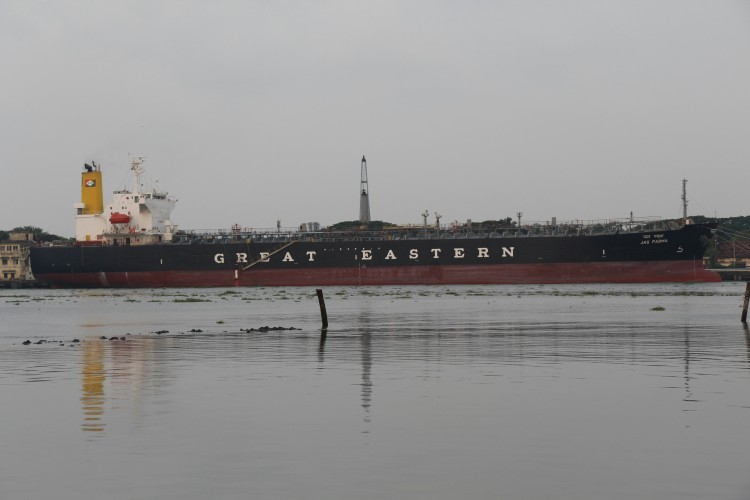
The government plans to increase private sector participation in the port sector by monetising Rs 10,000 crore worth of assets in the next fiscal year through public-private partnerships. This is part of the plan to raise the share of PPPs in state-owned ports to 80% by the end of the decade. In December 2022, India’s ministry of ports, shipping and waterways announced a list of 81 public-private partnerships to be awarded before March 2025.
The ministry has prepared a monetisation pipeline consisting of several projects. As India is currently undergoing elections, the divestment process has been slow but might gather speed afterward. The government fully owns 12 major ports, which account for about 50% of the country’s total port capacity. Adani Ports controls 24% of India’s port cargo handling, and JSW Infrastructure accounts for 6%. Other commercial port operators include Dubai-based DP World, although they are mainly regional and much smaller than Adani and JSW Infrastructure.
READ | BIMSTEC is key to India’s regional leadership ambitions
Privatisation of India’s port sector
There is a rising global trend towards privatisation, yet the government maintains a cautious stance on port privatisation. The government has been sceptical of selling its assets, especially as the shipping and port sectors worldwide are undergoing transformative changes. However, the government’s consideration of privatisation via PPPs indicates its commitment to leveraging private investments while retaining control over critical infrastructure assets.
Despite ambitious plans, several challenges remain in achieving these targets. Future PPP deals may be less attractive as the most profitable port terminals have already been awarded. Additionally, competition between terminals within the same port could further decrease investor interest. Despite these hurdles, the shipping ministry has a strong track record, exceeding its monetisation goals in the previous year.
The ministry has identified a pipeline of 81 projects valued at Rs 42,400 crore for PPP development, significantly exceeding its initial target of Rs 12,000 crore for FY24 under the national monetisation pipeline. Five PPP projects worth Rs 9,080 crore have been sanctioned, and eight PPP projects worth Rs 700 crore have been awarded in 2023-24.
The ministry has considered only a small portion of the newly appointed projects in its pipeline, focusing on pending mega projects. Among the proposed projects, a Rs 7,055 crore container terminal at VO Chidambaranar Port Authority (formerly VO Chidambaranar Port Trust) in Tuticorin, Tamil Nadu, has been in the pipeline since 2023. The project has attracted interest from major players, including Adani Ports and Special Economic Zone, Singapore’s PSA International, Dutch major Van Oord, JM Baxi, and JSW Infrastructure.
Key developments in port sector
The Tuticorin project seeks to capitalise on newfound investor interest in the region, which is set to receive significant investments. These include a Rs 16,000 crore electric vehicle manufacturing unit by Vietnamese major VinFast, ISRO’s spaceport in Kulasekarapattinam, Tamil Nadu, and Singapore’s Sembcorp’s Rs 36,238 crore investment in renewable energy.
Despite these steps, there are significant regulatory and operational challenges that the government needs to address. Streamlining the approval processes and enhancing the regulatory framework to foster a conducive environment for private players are crucial. Moreover, improving the logistics infrastructure and reducing bottlenecks at ports will be essential to maximise the benefits of PPPs.
The government is also considering selling a multipurpose cargo berth at Deendayal Port Authority’s (Kandla Port, Gujarat) satellite terminal at Tuna Tekra. However, the project has not garnered much attention from prospective buyers and is currently undergoing restructuring. The key project is delayed due to market uncertainties and substantial investment requirements.
The government has also been focusing on developing inland waterways to reduce congestion at major ports and promote seamless cargo movement. The Inland Waterways Authority of India (IWAI) is working on several projects to enhance the navigability of national waterways. This initiative is expected to complement port infrastructure, reduce transportation costs, and boost trade efficiency.
Initially, the project was expected to generate Rs 1,700 crore in investment. This revision is part of a broader effort to adjust upcoming port projects across India, including two new terminals at Syama Prasad Mookerjee Port in Kolkata and another project at Kandla Port.
Companies like JSW are attracted to the lucrative ports sector despite its capital-intensive nature. Entry barriers are high, with few players operating pan-India. However, the sector is appealing due to India’s large and underserved economy. JSW Infrastructure, India’s second-largest port operator by volume, is keenly interested in the government’s port privatisation initiatives. The company is also eyeing the mega transhipment port project at Galathea Bay in the Great Nicobar Island.
The global geopolitical dynamics play a significant role in shaping the outlook for India’s port sector. Trade policies, international relations, and global supply chain shifts impact port operations and investment decisions. The government needs to stay attuned to these factors and adopt a flexible approach to policy-making to ensure sustained growth and competitiveness.
